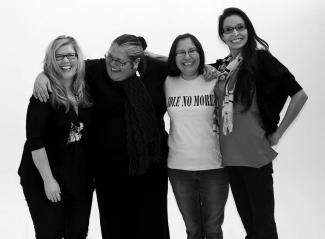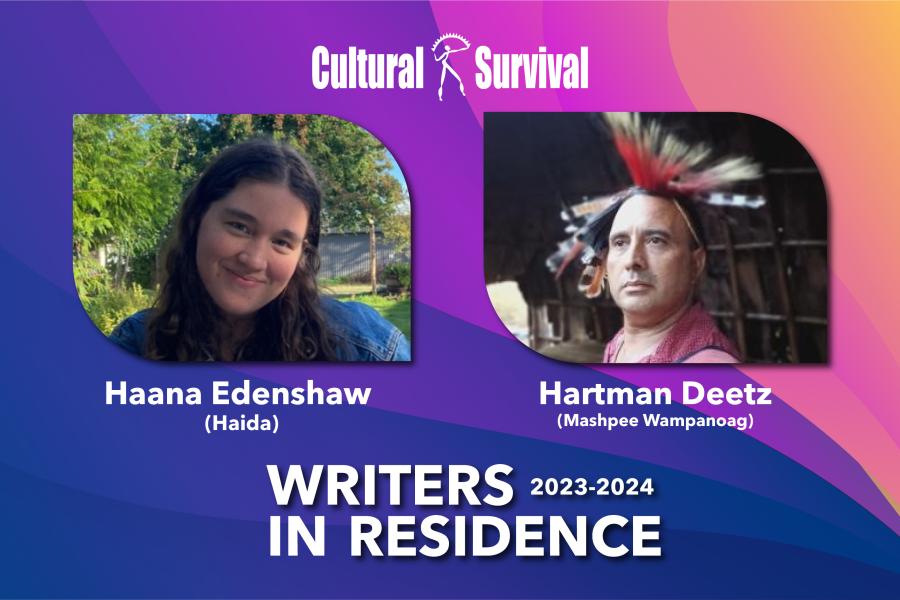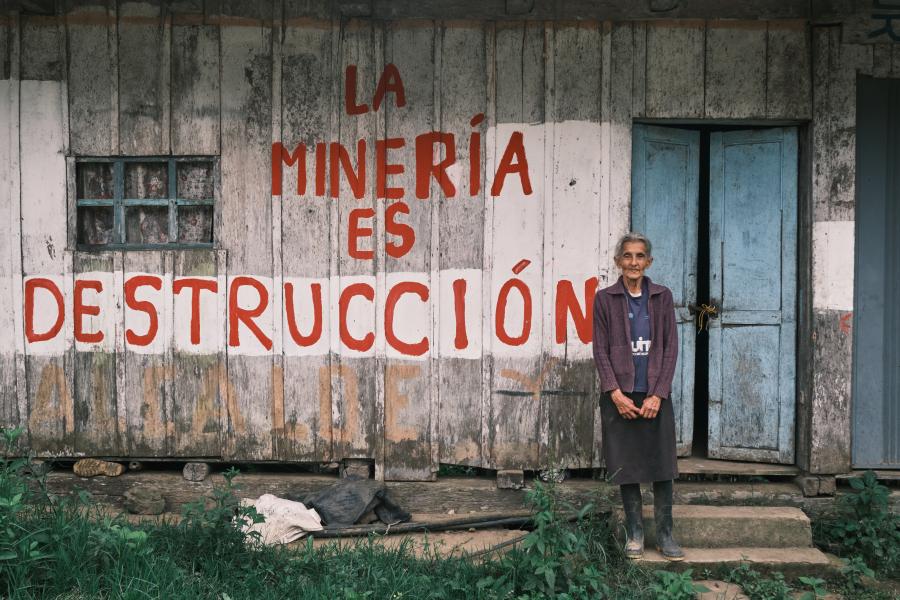
On December 11, 2012, on International Human Rights Day, northern Ontario Attawapiskat Chief Theresa Spence began a hunger strike, calling on Canadian Prime Minister Stephen Harper and the Governor General David Johnston to “initiate immediate discussions and the development of action plans to address treaty issues with First Nations across Canada.” Her peaceful resistance, emphasizing the importance of dialogue, catapulted the Idle No More movement to a new level of urgency. What began as a resistance against an impending bill in Saskatchewan spilled across the border to the United States, ultimately spreading as far as Ukraine and New Zealand
as a movement empowering Indigenous communities to stand up for their lands, rights, cultures, and sovereignty.
The Idle No More movement began as a thread of emails between four women from Saskatchewan: Jessica Gordon, Sylvia McAdam, Nina Wilson, and Sheelah McLean, who decided to make a “sincere effort to make some change.” The context for their resolution was the Canadian Bill C-45, the government’s omnibus budget implementation
bill that includes changes to land management on the reservations. It attacks the land base reserved for Indigenous people, removes protection for hundreds of waterways, and weakens Canada’s environmental laws. The women started a Facebook page to brainstorm ideas and a plan for action. Gordon, who is from Pasqua 4 Treaty Territory, decided to name the page “Idle No More” as a reminder “to get off the couch and start working.”
The movement’s grassroots tactics were evident from the first major event, a mass teach-in at Station 20 West, an innovative community enterprise center in Saskatoon, Saskatchewan, on November 10, 2012. Following the teach-in, which was loosely coordinated via the group’s Facebook page and Twitter hashtag #idlenomore, a series of rallies and protests spread across Saskatchewan to Manitoba and Alberta. Speaking to a reporter at one such rally, Wilson, a Nakota and Plains Cree from Treaty 4 White Bear territory said, “We are trying to help people get their voices back so that we can make more change and we are able to have more of a First Nations voice…not just a First Nations, but an Indigenous voice, and not just an Indigenous voice but a grassroots voice, because it affects us all.” And it does affect us all, as it does the environment.
Though it was the Omnibus C-45 bill that led to the movement, Idle No More is not just about legislation. It is also a call for renewal of the Indigenous identities and lifeways. The leaders and spokespersons of the movement have no hesitation linking the political to the personal, as the personal is very much a part of the movement. From her teepee on the frozen Ottawa River, a stone’s throw away from the Parliament Hill, Spence spent 44 days on hunger strike and recently said, “I am in this resistance because the pain became too heavy.
I just could not take it anymore.” She explained how the alienation and pain she feels stems from her years in the residential schools. “It was a closed chapter, until one day you realize this generation is facing the same pain we felt at resident school. We want a life of freedom and not a life of pain and fear for the generation.”
The fact that the movement’s leaders speak so openly about the pain they have experienced is one of the things that sets Idle No More apart. It reminds supporters, especially the Indigenous communities in Canada and across the globe, of their shared stories and memories and urges them to stick to their loyalties. The leaders speak in ways that their people can understand. Idle No More is a personal, global, and spiritual movement.
As McLean, who is the only non-Indigenous member in the initial group of four women, says, “It is a very loving movement…and it’s almost entirely female-led. Even though there are hundreds of men who support the movement, the vast majority of the movement’s participants and organizers are women.” The nature of the fluid, nonviolent, and unifying movement is one that both reflects and engages women’s agency. McLean’s passion for the cause is a statement that the resistance to Bill C-45 is a resistance relevant to every Canadian.
As the movement continues to grow, only loosely coordinated through the use of Twitter, Facebook, and a blog, there is an increasing chance that it could lose control of its core values: nonviolence, inclusion, and peace. Gordon, who has long served her community through nonprofit organizations and by volunteering on committees and boards, has taken up the responsibility for monitoring the virtual space of the movement. She manages the movement’s website idlenomore.ca, and takes great care in ensuring that the events that get promoted and added to the Idle No More banner are all peaceful in nature. “If I’m posting, I’ve been able to make sure [the contributions] are all peaceful. That’s what we’ve been saying from the beginning,” she says.
McAdam, who is from the Treaty 6 territory and a direct descendent of the treaty makers, is a scholar of Cree culture as well as law and human justice, and author of the book Cultural Teachings: First Nations Protocol and Methodologies. Nonviolence is a movement of great spiritual strength and necessitates precepts and reminders as to how the movement’s followers should renew and conduct themselves. McAdam invokes Cree history and laws to unite the Indigenous people. She says, “I’ve heard many of my relatives say, ‘yes, I will be there,’ but they don’t attend. Perhaps the reasons are legitimate; however, in our nehiyaw weyeswewna (Cree laws), when we say we are going to do something, the spirit world listens, your keepers listen, and our ancestors listen. When we say we are going to go ‘support,’ we mean, e we ni towh setohks
ka ke yak. This means we are doing more than supporting; our keepers, [and] spirits are going too. The ones that are listening will begin to pave the journey there for you so you may arrive safe and unharmed. When we don’t follow through with our plans, then our keepers will have set the path for that journey for nothing. When a person does this far too many times, then you are e pah kachimayak, which means dishonest, unsupportive.”
Each of the four women leading Idle No More fills a valuable niche. But even as the movement has strong leadership provided by the blend of their roles and experience, the masses at the grassroots still retain their place at the core of the movement. As the movement leaders speak of disenfranchised communities left without potable drinking water, as the extended history of colonialism and violation of treaty rights are recalled, the focus still remains on dialogue so that solutions are sought together
and not imposed; so that the space and chance for co-creation is securely protected; and participation and Free, Prior and Informed Consent are respected. Speaking up, dancing, and rallying together, co-creating, let’s too join. Let us be Idle No More.
— Febna Caven is an independent researcher and writer on communities in contested environments.



